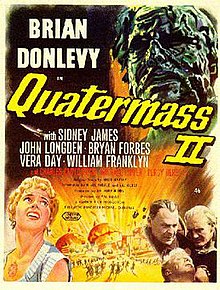Hammer Film Productions Ltd. is a British film production company based in London. Founded in 1934, the company is best known for a series of Gothic horror and fantasy films made from the mid-1950s until the 1970s. Many of these involve classic horror characters such as Baron Victor Frankenstein, Count Dracula, and the Mummy, which Hammer reintroduced to audiences by filming them in vivid colour for the first time. Hammer also produced science fiction, thrillers, film noir and comedies, as well as, in later years, television series.
Professor Bernard Quatermass is a fictional scientist originally created by writer Nigel Kneale for BBC Television. An intelligent and highly moral British scientist, Quatermass is a pioneer of the British space programme, heading the British Experimental Rocket Group. He continually finds himself confronting sinister alien forces that threaten to destroy humanity.
Quatermass is the surname of the title character of a British science fiction franchise of several television serials and films, and a radio production. Other notable uses of the word were inspired by this franchise.

Thomas Nigel Kneale was a Manx screenwriter who wrote professionally for more than 50 years, was a winner of the Somerset Maugham Award, and was twice nominated for the BAFTA Award for Best British Screenplay.

Quatermass and the Pit is a British television science-fiction serial transmitted live by BBC Television in December 1958 and January 1959. It was the third and last of the BBC's Quatermass serials, although the chief character, Professor Bernard Quatermass, reappeared in a 1979 ITV production called Quatermass. Like its predecessors, Quatermass and the Pit was written by Nigel Kneale.

The Quatermass Experiment is a British science fiction serial broadcast by BBC Television during the summer of 1953 and re-staged by BBC Four in 2005. Set in the near future against the background of a British space programme, it tells the story of the first crewed flight into space, supervised by Professor Bernard Quatermass of the British Experimental Rocket Group.
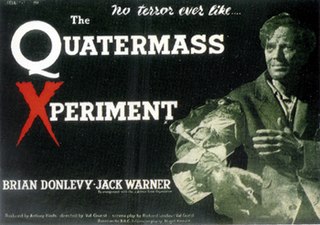
The Quatermass Xperiment is a 1955 British science fiction horror film from Hammer Film Productions, based on the 1953 BBC Television serial The Quatermass Experiment written by Nigel Kneale. The film was produced by Anthony Hinds, directed by Val Guest, and stars Brian Donlevy as the eponymous Professor Bernard Quatermass and Richard Wordsworth as the tormented Carroon. Jack Warner, David King-Wood, and Margia Dean appear in co-starring roles.

Quatermass II is a British science fiction serial, originally broadcast by BBC Television in the autumn of 1955. It is the second in the Quatermass series by writer Nigel Kneale, and the oldest of those serials to survive in its entirety in the BBC archives.

Quatermass and the Pit is a 1967 British science fiction horror film from Hammer Film Productions. It is a sequel to the earlier Hammer films The Quatermass Xperiment and Quatermass 2. Like its predecessors, it is based on a BBC Television serial, in this case Quatermass and the Pit, written by Nigel Kneale. The storyline, largely faithful to the original television production, centres on the discovery of ancient human remains buried at the site of an extension to the London Underground called Hobbs End. Ancient prehuman remains appear, then even more shocking discoveries, leading to the involvement of the space scientist Bernard Quatermass.

Cecil André Mesritz, known professionally as André Morell, was an English actor. He appeared frequently in theatre, film and on television from the 1930s to the 1970s. His best known screen roles were as Professor Bernard Quatermass in the BBC Television serial Quatermass and the Pit (1958–59), and as Doctor Watson in the Hammer Film Productions version of The Hound of the Baskervilles (1959).
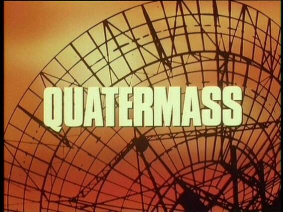
Quatermass is a 1979 British television science fiction serial. Produced by Euston Films for Thames Television, it was broadcast on the ITV network in October and November 1979. Like its three predecessors, Quatermass was written by Nigel Kneale. It is the fourth and final television serial to feature the character of Professor Bernard Quatermass who was played by John Mills.
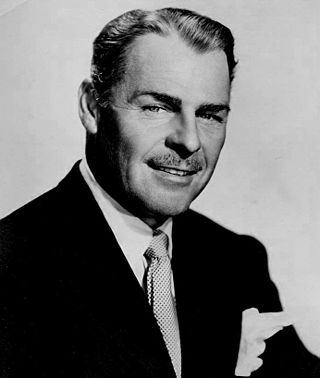
Waldo Brian Donlevy was an American actor, who was noted for playing dangerous and tough characters. Usually appearing in supporting roles, among his best-known films are Beau Geste (1939), The Great McGinty (1940) and Wake Island (1942). For his role as the sadistic Sergeant Markoff in Beau Geste, he was nominated for the Academy Award for Best Supporting Actor.

The Quatermass Memoirs is a British radio drama-documentary, originally broadcast in 5 episodes on BBC Radio 3 in March 1996. Written by Nigel Kneale, it was born out of his Quatermass series of films and television serials, which had first been broadcast in the 1950s. The idea for the show appeared as BBC radio intended to create a season of programming looking back at the 1950s, and it was the final piece of writing Kneale completed relating to the character.

X the Unknown is a 1956 British science fiction horror film directed by Leslie Norman and starring Dean Jagger and Edward Chapman. It was made by the Hammer Film Productions company and written by Jimmy Sangster. The film is significant in that "it firmly established Hammer's transition from B-movie thrillers to out-and-out horror/science fiction" and, with The Quatermass Xperiment (1955) and Quatermass 2 (1957), completes "an important trilogy containing relevant allegorical threads revealing Cold War anxieties and a diminishing national identity resulting from Britain's decrease in status as a world power".
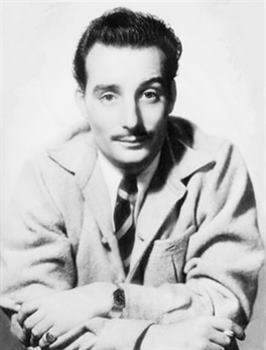
Val Guest was an English film director and screenwriter. Beginning as a writer of comedy films, he is best known for his work for Hammer, for whom he directed 14 films, and for his science fiction films. He enjoyed a long career in the film industry from the early 1930s until the early 1980s.

"The Year of the Sex Olympics" is a 1968 television play made by the BBC and first broadcast on BBC2 as part of Theatre 625. It stars Leonard Rossiter, Tony Vogel, Suzanne Neve and Brian Cox, and was directed by Michael Elliott. The writer was Nigel Kneale, best known as the creator of Quatermass.

The Stone Tape is a 1972 British television horror drama film written by Nigel Kneale and directed by Peter Sasdy and starring Michael Bryant, Jane Asher, Michael Bates and Iain Cuthbertson. It was broadcast on BBC Two as a Christmas ghost story in 1972. Combining aspects of science fiction and horror, the story concerns a team of scientists who move into their new research facility, a renovated Victorian mansion that has a reputation for being haunted. The team investigate the phenomenon, trying to determine if the stones of the building are acting as a recording medium for past events. However, their investigations serve only to unleash a darker, more malevolent force.

The Abominable Snowman is a 1957 British fantasy-horror film directed by Val Guest and written by Nigel Kneale, based on his own BBC television play The Creature. Produced by Hammer Films, the plot follows the exploits of British scientist Dr. John Rollason, who joins an American expedition, led by glory-seeker Tom Friend, to search the Himalayas for the legendary Yeti. Maureen Connell, Richard Wattis and Arnold Marle appear in supporting roles.
Anthony Frank Hinds, also known as Tony Hinds and John Elder, was an English screenwriter and producer.
The Quatermass Experiment is a 2005 live television film remake of the 1953 television series of the same title by Nigel Kneale.
